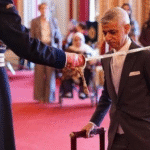In 2025, Russia and India are deepening their defense ties with a bold proposal: joint production and customization of the Su-57E, Russia’s fifth-generation stealth fighter jet. Unveiled at Aero India 2025, this offer includes full technology transfer, local manufacturing at Hindustan Aeronautics Limited (HAL), and the ability to integrate Indian systems. The Idea aims to boost India’s air power amid regional threats from China and Pakistan while supporting the “Make in India” initiative. But it’s not without hurdles—engine delays, geopolitical risks, and competition from the U.S. F-35 loom large. This article explores the collaboration’s potential, its challenges, and what it means for India’s defense future, drawing on the long history of Russo-Indian partnerships and the strategic need for a modern fighter fleet.
The Su-57E Offer: A Game-Changer for India?
At Aero India 2025 in Bengaluru, Russia’s Rosoboronexport and United Aircraft Corporation (UAC) pitched the Su-57E to India, emphasizing local production and customization. The Idea includes access to source codes, allowing India to tailor the jet with homegrown weapons and avionics. With only 31 fighter squadrons against a needed 42, the Indian Air Force (IAF) faces a capability gap. The Su-57E, with stealth features and supermaneuverability, could fill this void until India’s Advanced Medium Combat Aircraft (AMCA) is ready by 2035. Russia’s offer aligns with India’s push for self-reliance, promising economic benefits and technological growth.
Why Now?
India’s aging MiG-21s are retiring, and delays in Tejas deliveries have strained the IAF. Meanwhile, China’s J-20 and Pakistan’s potential J-31 jets pose growing threats. The Su-57E offers an interim solution, with Russia leveraging its long-standing defense ties—over 60% of India’s military hardware is Russian. The timing also reflects Russia’s need for export markets amid Western sanctions, making India a key partner.
The “Make in India” Angle
The proposal centers on HAL’s Nashik facility, where over 220 Su-30MKIs were built. Russia promises to use this infrastructure, reducing costs and creating jobs. Local production supports India’s “Atmanirbhar Bharat” vision, minimizing reliance on foreign suppliers. The deal could also boost India’s aerospace industry, with private firms potentially joining HAL.
What Makes the Su-57E Special?
The Su-57E, an export version of Russia’s Su-57, is a twin-engine stealth fighter designed to rival the U.S. F-35 and China’s J-20. It boasts low radar visibility, a top speed of Mach 2, and the ability to carry 10 tons of munitions, including hypersonic missiles like the Kinzhal. Russia’s offer includes advanced features like a GaN-based AESA radar and Indian-developed mission computers, ensuring compatibility with India’s Super-30 Su-30MKI upgrades. While critics question its stealth compared to the F-35, its agility and payload capacity make it a strong contender for India’s needs.
Key Features for India
The Su-57E can integrate Indian weapons like the Astra Mk1/Mk2 missiles and Rudram anti-radiation missiles. Its GaN AESA radar enhances target detection, and the Indian mission computer ensures operational synergy with the IAF’s fleet. Access to source codes allows India to modify systems independently, a rare concession not offered by the U.S. or France for their jets.
The Engine Question
The Su-57E currently uses the AL-41F-1S engine, but Russia’s advanced AL-51 (Izdeliye 30) engine, with supercruise and stealth features, is still in testing. Russia has promised to offer the AL-51 later, but delays could affect performance. India’s past concerns about the Su-57’s stealth led to its 2018 exit from the FGFA program, making engine readiness a critical issue.
The History of Russia-India Defense Ties
Russia has been India’s top defense supplier for decades, providing everything from MiG-21s to the S-400 missile system. The Su-30MKI, with over 260 units, forms the IAF’s backbone, built under license at HAL. Past collaborations, like the BrahMos missile, show the strength of this partnership. However, the failed FGFA program, abandoned in 2018 over cost and technology disputes, left trust issues. Russia’s new Su-57E offer aims to rebuild confidence with unprecedented transparency, including source code access, addressing India’s earlier concerns about control and customization.
Past Successes
The Su-30MKI program is a standout, with HAL mastering licensed production. The BrahMos joint venture has produced world-class supersonic cruise missiles, exported to countries like the Philippines. These successes show Russia and India can align on technology and production, making the Su-57E deal a logical next step despite past hiccups.
Lessons from the FGFA Failure
The FGFA, a planned Su-57 derivative, collapsed due to India’s doubts about stealth, engine performance, and Russia’s reluctance to share critical tech. The IAF felt the jet didn’t meet fifth-generation standards. Russia’s current offer addresses these issues with full technology transfer and customization, but skepticism remains about delivery timelines and sanctions risks.
Challenges and Risks of the Deal
While promising, the Su-57E collaboration faces hurdles. Russia’s production capacity is strained by sanctions, raising doubts about timely deliveries. The U.S. could impose CAATSA sanctions, as seen with India’s S-400 deal, complicating payments. The Su-57E’s stealth is debated, and engine delays could limit its edge. India’s MRFA tender, eyeing jets like the Rafale and F-35, adds competition. Posts on X highlight concerns, with some users calling Russia’s tech transfer promises “empty” based on past deals. India must weigh these risks against the deal’s strategic benefits.
Geopolitical Tensions
U.S.-Russia rivalry complicates India’s choice. Buying the Su-57E risks U.S. sanctions, while the F-35 offer limits customization. India’s balancing act—maintaining ties with both powers—is tricky, especially with China’s growing influence. Russia’s openness with source codes gives it an edge, but geopolitical fallout could disrupt supply chains.
Technical and Financial Hurdles
Localizing the Su-57E will take 3-4 years, requiring significant investment. The AL-51 engine’s testing phase adds uncertainty. Sanctions have disrupted Russia’s supply chains, delaying Su-57 deliveries to its own air force. India’s budget, already stretched by Rafale and Tejas programs, must accommodate this deal without derailing the AMCA.
How the Su-57E Fits India’s Defense Strategy
India faces a two-front threat from China and Pakistan, with China’s J-20 and Pakistan’s potential J-31 jets challenging air superiority. The Su-57E, with off-the-shelf deliveries of 20-30 jets, offers a quick boost while HAL ramps up production. Its integration with Indian systems aligns with the Super-30 Su-30MKI upgrades, streamlining logistics. The deal also supports the AMCA by providing tech like AESA radars and engines, accelerating India’s indigenous efforts. By producing the Su-57E locally, India could export it to friendly nations, enhancing its global defense role.
Countering Regional Threats
China’s 200+ J-20s and Pakistan’s JF-17s, possibly joined by J-31s by 2029, demand a modern IAF fleet. The Su-57E’s stealth and long-range missiles, like the R-37M, give India an edge in dogfights and strikes. Its manned-unmanned teaming with drones aligns with future warfare trends, crucial for Himalayan and desert operations.
Boosting Indigenous Efforts
Russia’s tech transfer includes engines and AI, which could speed up the AMCA, still in design. The Su-57E’s Indian systems, like the Virupaksha radar, will refine technologies for the AMCA. This collaboration ensures India gains expertise while fielding a fifth-generation jet sooner, balancing short- and long-term goals.
The Road Ahead: Will India Say Yes?
The Su-57E offer is a golden opportunity, but India’s decision hinges on trust, timing, and strategy. Russia’s willingness to share source codes and co-produce at HAL addresses past grievances, but sanctions, engine delays, and U.S. competition pose risks. The IAF, keen on Rafales, may hesitate, as seen in X posts favoring Western jets. Yet, with regional threats growing and AMCA years away, the Su-57E could be a pragmatic choice. Negotiations are ongoing, with HAL and private firms like Tata potentially involved. If successful, this deal could redefine India’s air power and cement Russo-Indian ties for decades.
Next Steps for Collaboration
India must finalize workshare agreements and funding. Russia suggests starting production in 2025, leveraging HAL’s Nashik plant. Joint teams will need to align on customization, ensuring Indian systems integrate smoothly. Regular talks, like those at IDEX 2025, will iron out details, with a government-to-government deal likely to bypass the MRFA tender.
Strategic Implications
Accepting the deal strengthens India’s strategic autonomy, reducing reliance on Western tech. It could also open export markets, with Russia proposing trilateral production with the UAE. However, India must navigate U.S. pressure and ensure Russia delivers on tech transfer promises. The Su-57E could position India as a regional powerhouse, but only if execution matches ambition.



